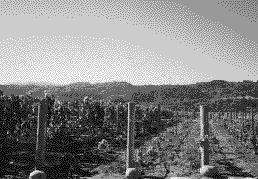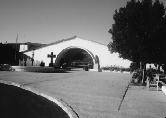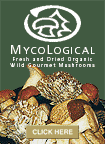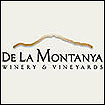To-Kalon, Tradition and Technology
By Rebecca
Chapa
|
|
Margrit
Mondavi with
daughter Annie |
Mondavi
WInery |
To-Kalon is both
the name of one of Robert Mondavi Winery's prized vineyards and
that of their new winery renovation project underway. The vineyard
itself sits on the Oakville Bench in Napa Valley. These 550 acres
enjoy some of the best growing conditions for vines.
H.W. Crabb first
planted the site in 1866, and deemed it 'To-Kalon' meaning 'highest
quality' or 'highest beauty' in Greek. 100 years later in 1966
Robert Mondavi again noted the quality inherent in this site and
made it the site of his winery. As Tim Mondavi states now, their
goal for the vineyard and the project of the same name is still
to create the best wine possible.
Fruit from To-Kalon
is integral in the quality of the Robert Mondavi Winery Cabernet
Sauvignon Reserve, the Oakville District Cabernet Sauvignon and
the up-coming To-Kalon Vineyard Cabernet Sauvignon. Quite a few
blocks of the vineyard are used for research such as vine and
rootstock spacing trials. Higher density plantings such as the
four by four foot spacing used here are thought to improve flavor
and concentration by reducing vine yields, increasing vine competition
and decreasing vigor.

In addition to
amazing Cabernet Sauvignon, To-Kalon I-block is a 10 acre parcel
of Sauvignon Blanc vines planted in 1945. These vines, believed
to be the oldest Sauvignon Blanc vines in North America and perhaps
the New World, produce the I-Block Fume Blanc, a wine with great
intensity, but very low yields. To-Kalon Vineyard is farmed with
sustainable agriculture methods such as hoe plowing and manual
weed control rather than herbicides, composting with organic matter
rather than synthetic fertilizer, cover crops and the like.
The To-Kalon project
will be the first major renovation of the winery since it was
founded in 1966. Visitor programs, wine tasting and retail areas
will be expanded and the winery while state-of-the-art, will concentrate
on traditional winemaking techniques like oak fermentation and
gravity flow. Tim Mondavi expains, "The goal of the To-Kalon
Project is to bring vineyard innovation together with a gentle,
traditional style of winemaking. This, we believe, will allow
us to fully express the unique personality of the fruit in the
finished wine."
The new multi-level
wing is designed for producing red wines like the Reserve, district
and single vineyard lines. It will feature 56 handcrafted oak
fermenters from Taransaud Coopers in Cognac and a barrel aging
cellar spanning 20,000 square feet enough to hold 1,300 barrels
one level high. This switch back to oak is ironic as Mondavi Winery
introduced stainless steel fermentation to the region in the 60's.
Tim Mondavi has found that oak is a good insulator, able to hold
the must cool prior to fermentation and retain temperatures during
fermentation.

Longer maceration
is possible with oak, creates more subtlety and nuance, polymerizes
tannins and helps to fix body. Stainless steel creates fresh and
bright wines while oak can create complexity, depth and a range
of fragrance. 'The technology of today's winemaking techniques
will allow 'Mondavi to create stable and high quality wines while
incorporating 'traditional practices to improve wine quality.
This balance between tradition and technology should propel the
quality of Robert Mondavi Winery's wines in the future.
|














